Today Current Affairs: 13th February 2021 for UPSC IAS exams, State PSC exams, SSC CGL, State SSC, RRB, Railways, Banking Exam & IBPS, etc
Table of Contents
World Radio Day:

The World Radio Day (WRD) is being celebrated across the world on February 13, 2021.
- This year marks the 10th anniversary of the proclamation of world radio day and more than 110 years of radio.
- The day will be observed under the theme, “New World, New Radio”.
- The theme highlights the services provided by the radio amid the Covid-19 pandemic.
- The day was proclaimed by the members of UNESCO in 2011.
- The day was adopted by the United Nations General Assembly in the year 2012 as an International Day.
- The UNESCO highlights that the radio is a powerful medium to celebrate humanity.
- It constitutes a platform for democratic discourse.
- Radio is one of the most widely consumed medium in the world.
- It has the ability to reach a wide audience.
- It also has the ability to shape society’s experience of diversity.
- Thus, to mark the significance of the Radio, World Radio Day is observed.
Women Excellence Award 2021:
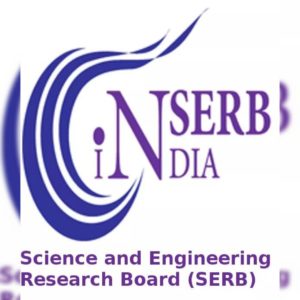
The SERB Women Excellence Award was announced on the occasion of International Day of Women and Girls in Science 2021.
- Four young women fellows from the National Science Academies have been awarded for excelling in science and engineering.
- The SERB Women Excellence Award will provide them a grant of Rs. 15 lakhs.
- The grant would be provided for a period of three years to the awardees in order to pursue their research ideas.
Women scientists who were selected for the awards include:
- Shobhna Kapoor– She is the Assistant Professor at the Indian Institute of Technology Bombay. She is working in the area of
- Chemical Biology – She is an expert in ‘Host-Pathogen Interactions & Membrane Biology, Chemical Biology & Biophysics’.
Antara Banerjee- She is a scientist at B National Institute for Research in Reproductive Health, Mumbai. She is an expert in Signal Transduction, Endocrinology, and the Biology of Reproduction. - Sonu Gandhi- She is a Scientist D from the National Institute of Animal Biotechnology, Hyderabad. She is from the Bionanotechnology area who focuses on Nanosensors, Design, and Fabrication of Label-free Biosensors.
- Ritu Gupta- she is an Assistant Professor in the Indian Institute of Technology Jodhpur, Rajasthan. She works in Nanotechnology and is an expert in Materials Science, Health & energy, Nanodevices, and Sensors.
Science and Engineering Research Board (SERB):
- It is a statutory body working under the Department of Science and Technology.
- It was established in 2009 by SERB ACT,2008. It is chaired by the Secretary of the Government of India in the Department of Science and Technology.
National e-Governance Plan In Agriculture:

The National e-governance plan in agriculture (NeGPA) is a Centrally Sponsored Scheme. The scheme was initially launched in the year 2010-11 in 7 States. Recently, this scheme was extended up to March 31, 2021. The NeGPA guidelines were amended in 2020-2021 in order to infuse modern information technologies in the farm sector. For that matter, funds were also released to sanction the projects in order to customize and shift the web & mobile applications to the platform that were to be developed using digital or emerging technologies.
- Further, the initiatives such as the Unified Farmers Service Platform (UFSP) was launched in order to bring a paradigm change in accessing the data related to farmers.
- The scheme was launched with the aim of achieving rapid development in India by using Information & Communication Technology (ICT).
- It helps in timely access of the agriculture-related information to the farmers.
- In the year 2014-15, a scheme was extended to cover all the remaining States and 2 UTs.
Phase-II of the scheme:
Under this phase, the funds were released to the States in order to carry out the activities such as,
- Site preparation of offices to install the hardware
- To the establishment of computer training labs
- Procurement, installation, and accounting of the system software.
- To back-up power arrangements.
- To set-up the State Project Management Unit (SPMUs) and
- To hire manpower on a contractual basis
- Data Digitization Customization of applications as per the requirement in the State and UTs.
Vigyan Jyoti Programme:

The second phase of the Vigyan Jyoti program was started on February 11, 2021. It was started on the occasion of International Day of Women and Girls in Science.
- The Vigyan Jyoti Programme will spread the programme to encourage the girls to take interest in science.
- It would also encourage them to build a career in STEM.
- The programme would spread to 50 more districts in addition to the 50 more districts across India.
- It would improve by learnings of the past year and will be expanded to more districts in-country in order to empower the women.
- The programme was started because women are under-represented and are a multi-dimensional problem. This problem is needed to be seen from all the angles.
- In the line, the New Education Policy and the Science, Technology and Innovation Policy would also help in removing the constraints.
- These policies would also help in making the best use of the demographic dividend so as to progress long in a short time. This in turn would help in increasing the number of women in science.
Vigyan Jyoti programme
- It is a new initiative that seeks to encourage girls to take interest in science and build career in this field.
- The programme was launched by the Department of Science & Technology (DST) in December 2019.
Parliamentary Panel Report On 5G In India:

Key findings by the panel:
- Despite the Department of Telecommunications (DoT) having submitted a report on the steps to make India 5G ready as early as August 2018, there was very little progress on the ground.
- Challenges: Lack of various approvals around spectrum such as uncertainty around auctions, high reserve price of spectrum, inadequate and poor development of test cases, the low reach of optical fiber across India, and deficient back-haul capacity.
- The country must expedite its approvals process and sort out issues such as spectrum auction, back-haul capacity, price, and user test cases to catch up with other countries that have taken a lead in 5G network deployment.
- The DoT should reach an understanding with the Department of Space and Ministry of Defence at the earliest to earmark the allocation of spectrum waves.
Tholpavakkoothu:

For the first time, Tholpavakkoothu, the famous shadow leather puppets will tell stories of the epic Ramayana with the help of robots.
- Tholpavakoothu is a form of shadow puppetry that is practiced in Kerala, India.
- It is performed using leather puppets as a ritual dedicated to Bhadrakali and is performed in Devi temples in specially built theatres called koothumadams.
- This art form is especially popular in the Palakkad, Thrissur, and Malappuram districts of Kerala.
- It is believed to have originated in the ninth century AD and uses Kamba Ramayana as its basic text.
- The puppets used in Tholpavakoothu used to be made out of deerskin but are now typically made from goatskin.
- The puppets are painted in vegetable dyes, as these dyes last long.
Draft Heritage Bylaws:
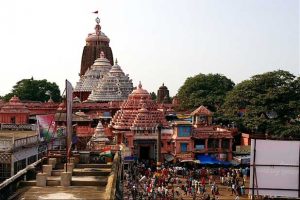
The Centre has withdrawn the draft heritage bylaws issued by the National Monuments Authority (NMA) for Shree Jagannath Temple in Puri, Odisha.
- The Odisha Government is demanding the withdrawal of the bylaws for temples in the Ekamra Kshetra area of Bhubaneswar as well.
Draft Heritage Bylaws:
- The government in 2010 formed the National Monuments Authority under the Ancient Monuments and Archaeological Sites and Remains (Amendment and Validation) Act, 2010.
- NMA’s primary role was to prepare heritage bylaws for the Archaeological Survey of India (ASI) listed structures.
- Meaning: The Ancient Monuments and Archaeological Sites and Remains (Amendment and Validation) Act 2010 mandates that monument-specific heritage bylaws be prepared to regulate construction activity near ASI-protected monuments.
- The draft heritage bylaws need to be approved by Parliament.
- The State government considered that the bylaws would have hampered the grand infrastructure development planned around the 12th century Shree Jagannath Temple in Puri.
- Similar heritage bylaws have been drafted for two temples in Bhubaneswar – the 13th century Vaishnava temple of Ananta Basudev and Shiva temple of Brahmeswar, both in the Ekamra Kshetra area.
- In 2020, the state government planned a beautification project around the area spread across 1,126 acres and develop it into a major tourist attraction.
New System Of Faceless Assessment And Appeal:
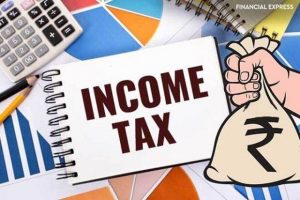
The Finance Secretary has said that the new system of faceless assessment and appeal would help bring down tax disputes substantially.
Tax Disputes (Data):
- As per official data, the amount involved in tax disputes was over Rs. 11 lakh crore in FY19-end, up 23% over a year-ago.
- Since India has a very high number of tax litigations, the resolution times are significantly higher, involving time and cost (on the part of the government as well as taxpayers).
Initiatives Taken to Reduce Tax Disputes:
- Dispute Resolution Committee
- Faceless Assessment and Appeal
- Vivad Se Vishwas Scheme
Voluntary Guidelines On Food Systems And Nutrition (VGFSyN):
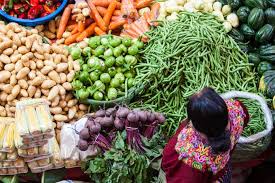
The Committee on World Food Security (CFS) has endorsed the first-ever Voluntary Guidelines on Food Systems and Nutrition (VGFSyN) which aims to support countries to eradicate hunger and malnutrition in all its forms by utilizing a food systems approach.
- The endorsement took place during the CFS 47th Session.
About the Guidelines:
- Food Systems Approach:
- The Guidelines highlight the complex and multidimensional interlinkages between sustainable food systems and healthy diets.
- Food systems are a complex web of activities involving production, processing, handling, preparation, storage, distribution, marketing, access, purchase, consumption, food loss, and waste, as well as the outputs of these activities, including social, economic, and environmental outcomes.
- Seven Policy Areas:
- Transparent, democratic, and accountable governance.
- Sustainable food supply chains to achieve healthy diets and in the context of climate change.
- Equal and equitable access to healthy diets.
- Food safety.
- People-centered nutrition knowledge, education, and information.
- Gender equality and women’s empowerment across food systems.
- Resilient food systems in humanitarian contexts.
India Energy Outlook 2021 Report:

The International Energy Agency (IEA) has released the India Energy Outlook 2021 Report which explores the opportunities and challenges ahead for India as it seeks to ensure reliable, affordable, and sustainable energy for a growing population.
- The India Energy Outlook 2021 is a new special report from the IEA’s World Energy Outlook series.
Key findings:
- India will make up the biggest share of energy demand growth at 25% over the next two decades, as it overtakes the European Union as the world’s third-biggest energy consumer by 2030.
- India’s energy consumption is expected to nearly double as the nation’s gross domestic product (GDP) expands to an estimated $8.6 trillion by 2040 under its current national policy scenario.
- India’s growing energy needs will make it more reliant on fossil fuel imports as its domestic oil and gas production has been stagnant for years despite government policies to promote petroleum exploration and production and renewable energy.
- India’s oil demand is expected to rise to 8.7 million barrels per day (BPD) in 2040 from about 5 million BPD in 2019, the IEA said, while its refining capacity will reach 6.4 million BPD by 2030 and 7.7 million BPD by 2040, from 5 million BPD.
- The world’s second-biggest net oil importer after China currently imports about 76% of its crude oil needs. That reliance on overseas oil is expected to rise to 90% by 2030 and 92% by 2040.
- Rising oil demand could double India’s oil import bill to about $181 billion by 2030 and nearly treble it to $255 billion by 2040 compared with 2019.
Third Largest Energy Consumer by 2030:
- India will make up the biggest share of energy demand growth at 25% over the next two decades, as it overtakes the European Union as the world’s third-biggest energy consumer by 2030.
- Presently, India is the fourth-largest global energy consumer behind China, the United States and the European Union.
- India’s energy consumption is expected to nearly double as the nation’s Gross Domestic Product (GDP) expands to an estimated USD 8.6 trillion by 2040 under its current national policy scenario.
- Prior to the global pandemic, India’s energy demand was projected to increase by almost 50% between 2019 and 2030, but growth over this period is now closer to 35%.
Industrialization is a Major Driving Force:
- Over the last three decades, India accounted for about 10% of World Growth in Industrial Value-added [in Purchasing Power Parity (PPP) terms].
- By 2040, India is set to account for almost 20% of Global Growth in Industrial value-added, and to lead global growth in industrial final energy consumption, especially in steelmaking.
Reliance on Imports:
- India’s growing energy needs will make it more reliant on fossil fuel imports as its domestic oil and gas production has been stagnant for years despite government policies to promote petroleum exploration and production and renewable energy.
- Rising oil demand could double India’s oil import bill to about USD 181 billion by 2030 and nearly treble it to USD 255 billion by 2040 compared with 2019.
Oil Demand:
- India’s oil demand is seen rising by 74% to 8.7 million barrels per day by 2040 under the existing policies scenario.
- A five-fold increase in per capita car ownership will result in India leading the oil demand growth in the world.
- Its net dependence on oil imports – taking into account both the import of crude oil and the export of oil products – increases to more than 90% by 2040 from the current 75% as domestic consumption rises much more than production.
Gas Demand:
- India will become the fastest-growing market for Natural gas, with demand more than tripling by 2040.
- Natural gas import dependency increased from 20% in 2010 to almost 50% in 2019 and is set to grow further to more than 60% in 2040.
Coal Demand:
- Coal currently dominates India’s electricity sector, accounting for over 70% of overall generation.
- Coal demand is seen rising to 772 million tonnes in 2040 from the current 590.
Renewables Energy Resources Demand:
- India’s share in the growth in renewable energy is the second-largest in the world, after China.
Agreement On Disengagement In The Pangong Lake:

India and China have reached an agreement on disengagement in the Pangong lake area to cease their forward deployments in a phased, coordinated, and verified manner.
As per the agreement:
- The Chinese side will keep its troop presence in the North Bank area to the east of Finger 8.
- Reciprocally, the Indian troops will be based at their permanent base at Dhan Singh Thapa Post near Finger 3.
- Similar action would be taken in the South Bank area by both sides.
- Any structures that had been built by both sides since April 2020 will be removed and the landforms restored.
- Both sides have agreed on a temporary moratorium on military activities in the North Bank, including patrolling in the traditional areas.
Urban Local Bodies (ULB) Reforms:
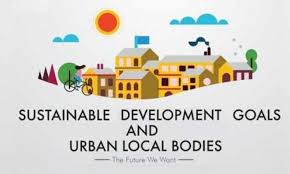
Goa becomes the 6th State to complete Urban Local Bodies (ULB) reforms. Gets additional borrowing permission of Rs. 223 crore.
- Goa has joined five other States namely, Andhra Pradesh, Madhya Pradesh, Manipur, Rajasthan, and Telangana, who have completed ULB reforms.
- Reforms in ULBs and the urban utility reforms are aimed at financial strengthening of ULBs in the States and to enable them to provide better public health and sanitation services to citizens. Economically rejuvenated ULBs will also be able to create good civic infrastructure.
The set of reforms stipulated by the Department of Expenditure are:
- The State will notify:
- Floor rates of property tax in ULBs which are in consonance with the prevailing circle rates (i.e. guideline rates for property transactions) and;
- Floor rates of user charges in respect of the provision of water supply, drainage, and sewerage which reflect current costs/past inflation.
- The State will put in place a system of periodic increases in floor rates of property tax/ user charges in line with price increases.
Besides, the center had identified four citizen-centric areas for reforms. They are:
-
- Implementation of One Nation One Ration Card System
- Ease of doing business reform
- Urban Local body/ utility reforms
- Power Sector reforms.
Arbitration And Conciliation (Amendment) Bill 2021:
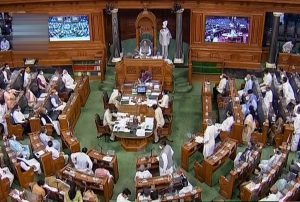
Lok Sabha today gave its nod to Arbitration and Conciliation (Amendment) Bill 2021
- The Arbitration and Conciliation (Amendment) Bill, 2021 was introduced in Lok Sabha on February 4, 2021.
- It seeks to amend the Arbitration and Conciliation Act, 1996.
- The Act contains provisions to deal with domestic and international arbitration and defines the law for conducting conciliation proceedings.
- The Bill replaces an Ordinance with the same provisions promulgated on November 4, 2020.
- The Bill specifies that a stay on the arbitral award can be provided (even during the pendency of the setting aside of the application) if the court is satisfied that:
- the relevant arbitration agreement or contract, or
- the making of the award was induced, or affected by fraud or corruption.
- This change will be effective from October 23, 2015.
- The Bill removes the Schedule for arbitrators and states that the qualifications, experience, and norms for accreditation of arbitrations will be specified under the regulations.




